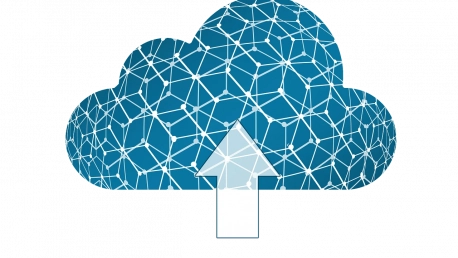In today’s interconnected world, businesses are increasingly exposed to numerous hazards, such as disasters and cyber-attacks. Ensuring business continuity and disaster recovery is crucial to maintaining client trust and guaranteeing the survival and operational stability of companies. Cloud solutions have become instrumental in enhancing organizations’ capacity to recover from disasters and maintain uninterrupted client experiences. The integration of cloud technologies into disaster recovery (DR) and business continuity (BC) strategies has reshaped the landscape, providing a more resilient framework that is essential in today’s digital age.
The Dual Pillars of Resilience: Disaster Recovery and Business Continuity
Understanding Disaster Recovery (DR) and Business Continuity (BC)
Disaster recovery (DR) involves the process of reconstructing information technology frameworks and systems following a disruptive event. This ensures that businesses can restore normal operations as swiftly as possible. On the other hand, business continuity (BC) represents a broader strategy that ensures a business can continue operations seamlessly, even amidst unforeseen circumstances. Together, DR and BC methodologies equip businesses to minimize disruptions and financial losses effectively. While DR focuses on the technical aspects of recovery, such as restoring data and systems, BC addresses the overarching operational aspects, ensuring that core functions and processes continue without significant delays or interruptions.The importance of a cohesive DR and BC strategy cannot be overstated. These two components work in tandem to create a robust preparedness plan that not only addresses the immediate aftermath of a disaster but also ensures long-term operational stability. Businesses that invest in both DR and BC are better prepared to handle unexpected challenges, safeguarding their reputation and customer trust. By understanding the distinct yet complementary roles of DR and BC, organizations can develop comprehensive plans that cover all potential risks, ensuring resilience and continuity.
The Symbiotic Relationship Between DR and BC
The integration of DR and BC allows businesses to not only address technical failures immediately but also to sustain operations over the long term. While DR focuses on technical recovery, BC encompasses all aspects of organizational function, ensuring that employees, processes, and communications remain intact during adversities. This comprehensive approach ensures holistic resilience, fostering client trust and, in turn, securing business longevity. Moreover, a synergistic DR and BC strategy outlines clear roles and responsibilities, fostering a coordinated response that minimizes confusion and maximizes efficiency during critical times.Consider the scenario of a natural disaster affecting a company’s data center. While DR measures would ensure the swift restoration of data and systems, BC plans would ensure that employees can work remotely, and critical business functions continue uninterrupted. This dual approach ensures that the organization remains operational, instilling confidence in clients and stakeholders. By leveraging cloud solutions, businesses can enhance this symbiotic relationship, tapping into scalable and flexible resources that adapt to changing needs and demands during recovery efforts.
Advantages of Cloud Solutions for DR and BC
Cost-Effectiveness and Financial Flexibility
Cloud platforms offer businesses flexibility and scalability, allowing resources to be adjusted dynamically based on demand. This elasticity proves particularly beneficial during the disaster recovery process, where resource needs can surge unexpectedly. Traditional physical infrastructure for disaster recovery necessitates significant capital investment, making it prohibitively expensive for many businesses. Cloud services, however, utilize a pay-as-you-go model. This model allows businesses to incur costs only for the resources they use, substantially reducing both capital and operational expenditures. This financial flexibility offers businesses greater control and planning capabilities in DR scenarios, enabling a more strategic allocation of resources.Additionally, the cost-effectiveness of cloud solutions extends beyond immediate financial savings. The reduction in upfront capital investment allows businesses to allocate funds towards other critical areas such as innovation, employee development, and customer experience enhancements. Over time, the cumulative savings from using cloud services can contribute to a stronger financial position, enhancing an organization’s overall resilience. This financial flexibility is especially valuable for small and medium-sized enterprises (SMEs) that may lack the resources to invest in extensive physical infrastructure for disaster recovery.
Enhanced Security Measures
Leading cloud providers invest heavily in cutting-edge security measures to protect data. Features such as encryption, multi-factor authentication, and continuous monitoring ensure robust data security even during a disaster. The prevalence of security concerns as a driver for cloud adoption is highlighted by PwC, which notes that 60% of businesses transitioned to cloud-based BC solutions primarily due to enhanced security features. These measures not only protect against data breaches but also ensure compliance with regulations, offering an additional layer of trust and reliability. By leveraging advanced security protocols, cloud providers help businesses safeguard sensitive information, maintaining the integrity and confidentiality of data even in the face of disruptions.Moreover, the continuous monitoring and real-time threat detection capabilities offered by cloud platforms enhance an organization’s ability to respond to security incidents swiftly. This proactive approach to security minimizes the risk of prolonged exposure to vulnerabilities, reducing the potential for data breaches and other cyber threats. As regulatory requirements become increasingly stringent, the ability to demonstrate robust security practices through cloud-based solutions can also provide a competitive advantage. Businesses can assure clients and stakeholders that their data is protected by state-of-the-art security measures, reinforcing trust and credibility.
Faster Recovery Times and Efficiency
Cloud solutions facilitate rapid recovery of data and applications, significantly reducing downtime. Maintaining swift operations continuity is critical to preserving customer satisfaction and trust. Research by Cisco reveals that companies employing cloud-based DR experienced a 95% reduction in recovery times compared to traditional methods. This underscores the substantial speed advantage conferred by cloud solutions. The rapid recovery process helps in promptly resuming business activities, maintaining customer relationships, and preventing potential revenue loss. Faster recovery times translate into a reduced impact on business operations, ensuring that employees can return to their regular duties without extended interruptions.Efficiency in disaster recovery is further enhanced through automation and streamlined recovery workflows enabled by cloud technologies. Automated backups, failovers, and recovery procedures eliminate manual intervention, reducing the risk of human error and accelerating the overall recovery process. Additionally, the scalability of cloud solutions ensures that businesses can handle varying volumes of data and applications, adapting to changing demands without compromising recovery speed. This adaptability is crucial for dealing with diverse disaster scenarios, from minor disruptions to significant catastrophic events.
Key Components of an Effective Cloud-Based DR and BC Strategy
Data Backup and Duplication
Regular data backups and information duplication to cloud servers ensure the continuous availability of critical data. This practice mitigates the risk of data loss and accelerates recovery efforts. Businesses can schedule automatic backups, ensuring that the latest data is always available in the event of a disaster. Cloud-based data backup solutions offer more than just storage; they provide features such as versioning, deduplication, and geographic redundancy, enhancing data integrity and accessibility. By maintaining multiple copies of data in different locations, businesses can ensure that even if one server is compromised, data remains protected and recoverable.The adoption of cloud-based data backup solutions also simplifies the restoration process. In the event of data loss, businesses can quickly retrieve the required information from the cloud, minimizing downtime and disruption. This seamless access to data is particularly valuable for businesses operating in industries with stringent data recovery requirements, such as finance and healthcare. Additionally, cloud backup solutions provide a cost-effective alternative to traditional on-premises storage, reducing the need for physical infrastructure investments and ongoing maintenance costs.
Disaster Recovery as a Service (DRaaS)
DRaaS provides a comprehensive, managed solution for disaster recovery, allowing businesses to leverage specialized expertise and infrastructure without significant in-house investments. This service ensures that businesses have a tailored disaster recovery plan, which is managed by experts, thereby reducing the burden on internal IT teams. DRaaS includes various recovery options, such as automated failovers and regular DR drills, to ensure preparedness and minimize recovery time. By outsourcing disaster recovery efforts to a specialized provider, businesses can benefit from industry best practices and advanced technologies that enhance their overall recovery capabilities.Moreover, DRaaS offers scalability and flexibility, allowing businesses to customize their recovery plans based on specific needs and priorities. This adaptability ensures that DR solutions remain aligned with evolving business requirements, providing robust protection against a wide range of potential threats. The managed nature of DRaaS also facilitates continuous testing and improvement, ensuring that recovery plans are always up-to-date and effective. As a result, businesses can achieve a higher level of resilience, minimizing the impact of disruptions on operations and customer service.
Business Continuity Planning (BCP) Support
A well-developed BCP outlines the procedures and responsibilities during a disaster. Cloud platforms support BCP by offering tools for communication, collaboration, and remote work, ensuring employees can continue working even if physical office access is disrupted. These tools include cloud-based communication platforms, collaborative workspaces, and document-sharing systems that enable seamless operation regardless of location. By providing a virtual workspace, cloud solutions ensure that employees can access the resources they need to perform their tasks effectively, maintaining productivity during crises.In addition to facilitating remote work, cloud-based BCP tools enhance coordination and communication among team members. Features such as real-time messaging, video conferencing, and project management platforms enable efficient collaboration, ensuring that critical tasks are completed promptly. This level of connectivity is vital for maintaining business operations during disruptions, as it allows teams to stay organized and focused on recovery efforts. Furthermore, cloud solutions provide continuous access to important documents and data, ensuring that employees have the information they need to make informed decisions and support ongoing business activities.
Future Trends in Cloud-Based DR and BC
Integration of AI and Machine Learning
AI and ML can enhance DR and BC strategies by predicting potential disruptions and automating responses, thereby improving preparedness and response efficiency. These technologies can analyze vast amounts of data to identify patterns, forecast potential risks, and generate automated alerts and actionable insights to mitigate threats before they escalate. By leveraging AI and ML, businesses can develop more proactive and adaptive DR and BC strategies that enhance overall resilience. For example, machine learning algorithms can detect anomalies in system performance, triggering automated recovery processes to address issues before they impact operations.The integration of AI and ML also enables continuous improvement in DR and BC strategies. As these technologies learn from past incidents and recovery efforts, they can refine their predictive capabilities and response mechanisms. This iterative process ensures that recovery plans remain effective and up-to-date, adapting to emerging threats and changing business environments. Additionally, AI-driven automation reduces the reliance on manual intervention, minimizing the risk of human error and enhancing the speed and accuracy of recovery efforts.
Adoption of Hybrid Cloud Models
Hybrid cloud models, which combine public and private clouds, offer a balanced approach to DR and BC. They provide the flexibility and cost-efficiency of public clouds while maintaining the security and control of private clouds. Businesses can use public clouds for less sensitive applications and private clouds for critical operations, optimizing resources and costs while ensuring security. This hybrid approach allows organizations to tailor their DR and BC strategies to specific needs, ensuring that the most critical functions receive the highest level of protection and control.The adoption of hybrid cloud models also facilitates seamless integration and interoperability between different cloud environments. By leveraging the strengths of both public and private clouds, businesses can create a more resilient and adaptable infrastructure. This approach supports diverse recovery scenarios, enabling organizations to scale resources and capabilities as needed. Additionally, hybrid cloud models offer enhanced data mobility, allowing businesses to transfer data and applications between environments with minimal disruption. This flexibility ensures that recovery efforts can be tailored to the specific nature of the disaster, optimizing response times and outcomes.
Advancements in Edge Computing
By processing data closer to its source, edge computing reduces latency and improves the efficiency of DR processes. This capability is particularly valuable for businesses requiring real-time data processing and decision-making. Edge computing can support DR and BC by ensuring that critical data remains accessible even during network disruptions, maintaining operational continuity. For example, in the case of a localized outage, edge computing can ensure that essential functions continue to operate, providing a buffer until central systems are restored.The integration of edge computing with cloud-based DR and BC strategies offers additional resilience by distributing processing power and data storage across multiple locations. This decentralized approach reduces the reliance on a single data center, minimizing the risk of a single point of failure. Additionally, edge computing can enhance security by processing sensitive data locally, reducing exposure to potential threats during transmission. As businesses continue to adopt IoT and other connected technologies, the role of edge computing in DR and BC strategies will become increasingly important, supporting real-time operations and decision-making in dynamic environments.
Conclusion
In our increasingly interconnected world, businesses face numerous threats such as natural disasters and cyber-attacks, which can severely disrupt operations. Ensuring business continuity and effective disaster recovery is crucial for maintaining client trust and ensuring the survival and operational stability of companies. Cloud solutions have become vital tools in improving organizations’ abilities to recover from such disasters and sustain uninterrupted client experiences. By integrating cloud technologies into disaster recovery (DR) and business continuity (BC) strategies, businesses can leverage a more resilient and adaptable framework. The integration of cloud-based solutions has not only enhanced data protection and recovery speed but also provided scalable and cost-effective options for businesses of all sizes. This paradigm shift allows businesses to respond more efficiently to disruptions, ultimately fortifying their ability to survive and thrive in today’s digital age. Thus, the role of cloud technology in business continuity and disaster recovery strategies is indispensable in creating a robust and reliable operational environment.









